Social Commerce Insights
Selling Content on Social Media: Shopping Behavior & User Demands
Explore how content on social media shifts casual scrolling into actual buying. A must-read for business strategists and everyday digital consumers.
Article by Cihan Uzunoglu | October 17, 2023
Ever find yourself immersed in a YouTube video or a lifestyle influencer's post and then feel an urge to buy the featured product? The lines between content and commerce are increasingly blurring on social media platforms, making it a fertile ground for brands and consumers alike.
What motivates us to turn our scrolling into shopping, and what types of content make us hit the "Buy Now” button? The influence of social media on our purchasing decisions is a developing frontier that no one in business – or even daily digital life – can afford to overlook.
Whether you're a marketer strategizing for the next big campaign or simply curious about your own online behavior, you'll want to understand the mechanics of social media shopping choices.
The State of Online Shopping on Social Media
In online commerce, social media is a growing hub for shoppers and brands. This section, using recent data, underscores the main drivers converting browsers into buyers, from deals to ease of purchase.
More Than a Quarter of Internet Users Seek Buying Inspiration on Social Media
According to data from the third quarter of 2022, the foremost reason people worldwide use social media is for keeping in touch with friends and family, at 47.1%. Filling spare time (36.2%) and reading news stories (34.2%) also rank highly, illustrating that social media serves diverse needs and interests.
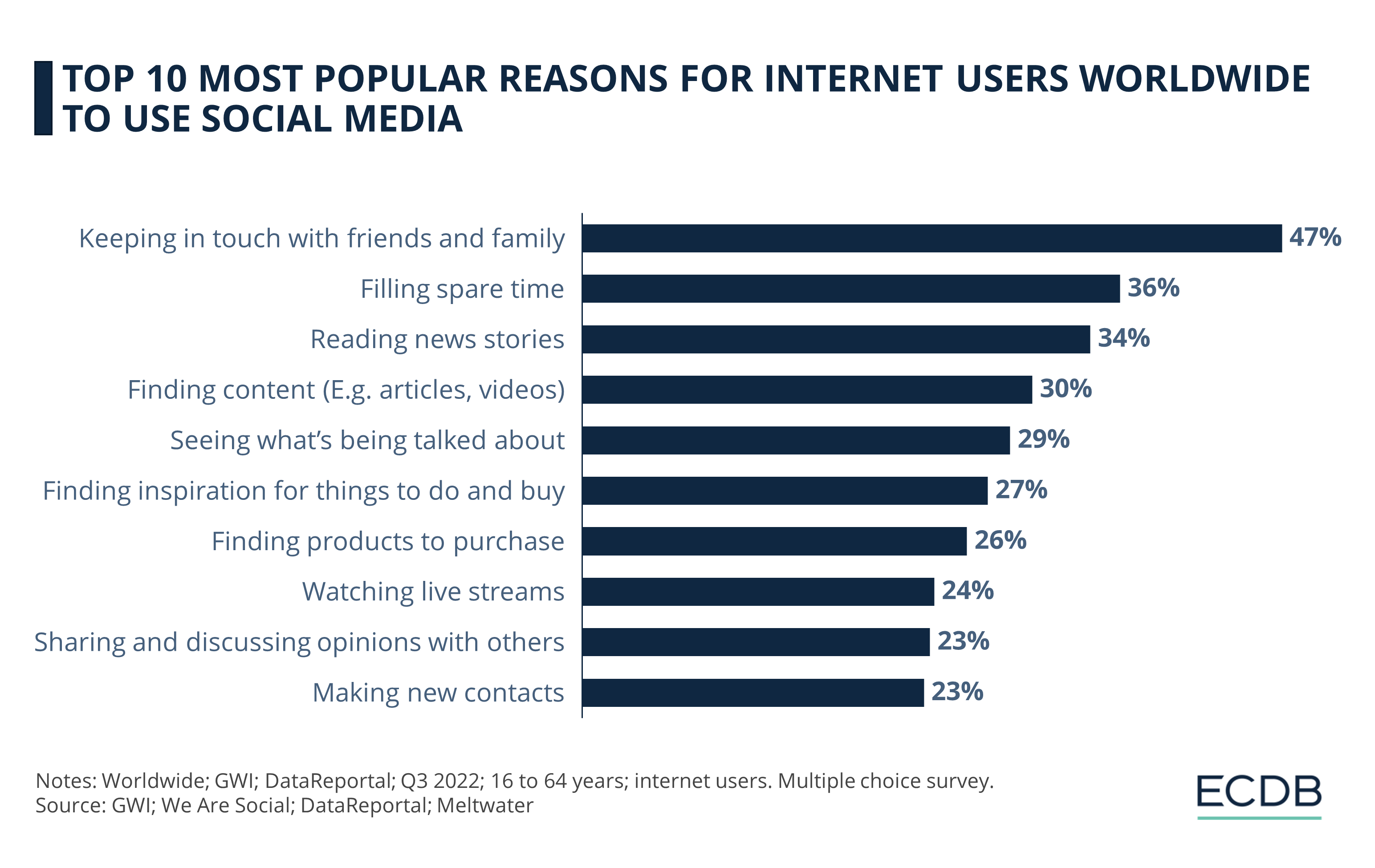
For businesses looking to tap into eCommerce opportunities on social media platforms, a couple of categories warrant special attention. Specifically, 27.3% of users turn to social media for "finding inspiration for things to do and buy," while 25.9% are on the lookout for "finding products to purchase." Moreover, content from favorite brands holds sway over 22.7% of users. These figures hint at social media’s potential as a catalyst for consumer decisions, from idea generation to product discovery and brand engagement.
In contrast to the dominant reasons for using social media, these shopping-related activities are still a secondary function for the platforms. Nonetheless, they present a growing area that businesses would be wise to explore, especially given the increasing integration of shopping features on various social media platforms.
With a clearer understanding of why people are—or aren't—shopping on social media, our focus now shifts to what might motivate them to shop more. What are the incentives or factors that could turn a casual browser into a committed buyer?
Deals and Easy Purchase Are Top Motivators for Social Commerce
As we covered before, a range of influences shape global consumers' willingness to increase their shopping on social platforms, as highlighted in a report by Wunderman Thompson Commerce.
Topping the list of motivators are deals and discounts, cited by 39% of shoppers surveyed. This finding is hardly startling, considering the inflationary pressures impacting eCommerce. Following closely is the ease of purchase, identified by one-third of respondents as a significant factor driving their shopping behavior. Exclusive offers also carry weight, persuading 28% of those surveyed.
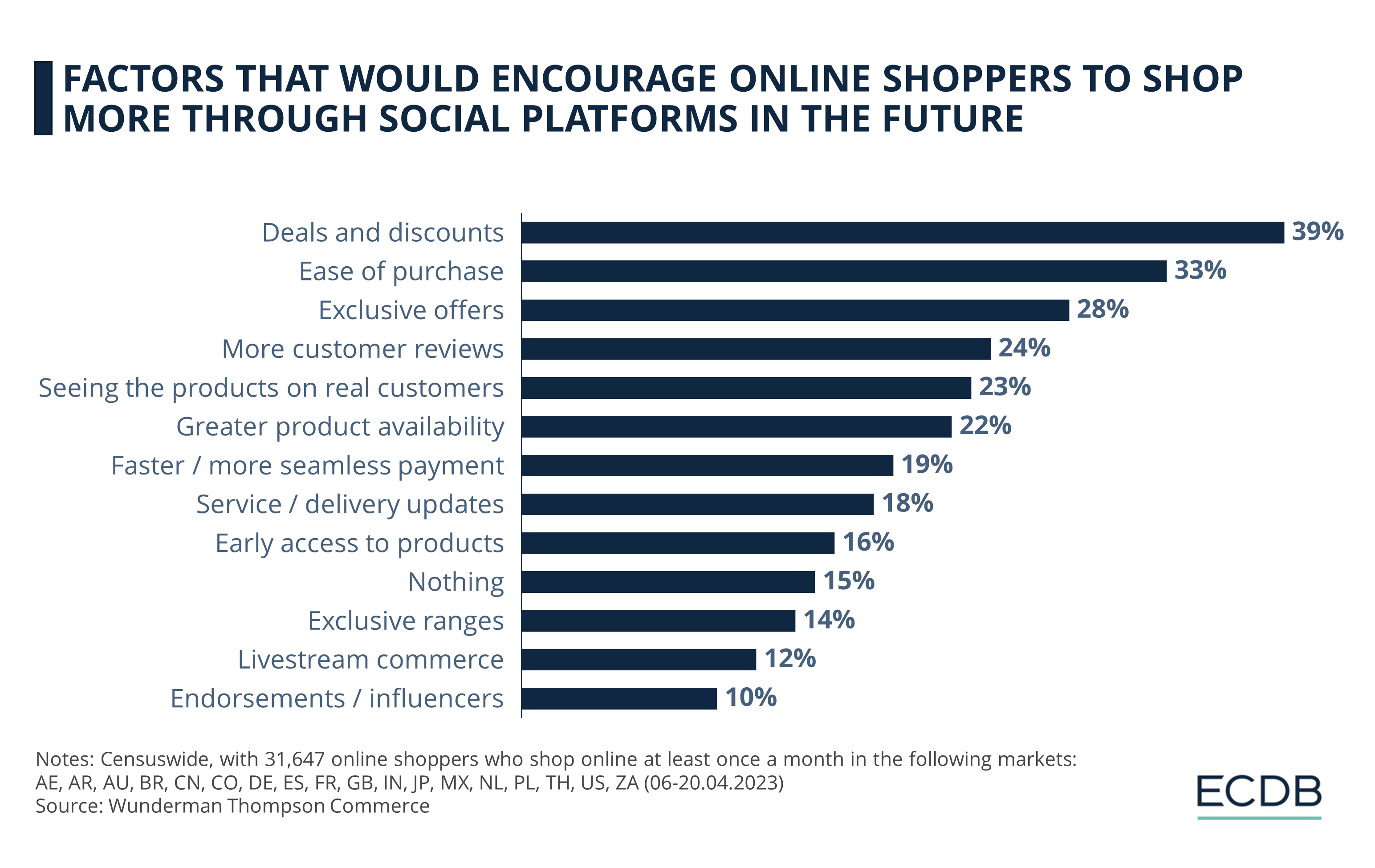
While less dominant, additional considerations like having more customer reviews and seeing products on actual consumers were still mentioned.
Further down the list, registering below 20%, are varied elements like expedited payment options, updated services, early access to products, specialized product ranges, livestreaming opportunities, and the influence of endorsements or personalities. Intriguingly, a small but not insignificant 15% of participants revealed that no particular incentives would boost their propensity to shop via social platforms.
Most Popular Types of Content on Social Media
When examining the types of content creators followed on social media worldwide as of November 2022, food content creators lead the pack with 27%, followed by lifestyle creators at 22% and travel influencers at 20%. While finance, tech, skincare and beauty, and several other types of content creators garnered less than 20% of followers, they still hold their own niche appeal.
It's worth noting that high follow rates for specific types of content don't necessarily translate into those content types exerting the most influence over online shoppers on social media platforms. However, understanding what's popular and engaging for the general user base has the potential to guide marketers in crafting strategies that not only resonate with a large audience but also offer opportunities to bolster social commerce.
Trending Topics: Influence on Social Media Shoppers
Having dissected the preferences for types of content, it's time to delve into the trends and topics currently captivating social media users. By examining these hot-button subjects, we can draw actionable insights to better align marketing strategies with the interests that matter most to today's digital consumer.
Among the topics experiencing year-on-year growth on Facebook and Instagram, "Haptic communication" on Facebook has surged with an astounding 1,083% increase. Following this are "Generative art" and "Fantasy world" on Instagram, with growth rates of 676% and 534%, respectively. Other significant topics include "Smartglasses" (233%), "Artificial intelligence" (173%), and "#metaverse" (122%).
Haptic communication refers to the use of touch as a form of non-verbal communication, often enabled through technology to simulate the sense of touch in digital interactions.
In the realm of water, lifestyle, and energy-related conversations, "Sustainable city" discussions on Instagram have soared, showing a 2,143% increase. "Ecovillage" on Facebook and "Agritourism" on Facebook have also seen substantial growth, with rates of 1,132% and 627% respectively.
Online businesses can glean valuable insights from these burgeoning topics. For those in the tech industry, focusing on haptic technology could capture a rapidly growing audience interested in touch-based communication. Similarly, businesses in the art and entertainment sectors could potentially ride the wave of interest in generative and fantasy art. Moreover, the substantial growth in conversations around "Smartglasses," "Artificial intelligence," and "#metaverse" indicates that tech-savvy, future-oriented topics continue to captivate audiences.
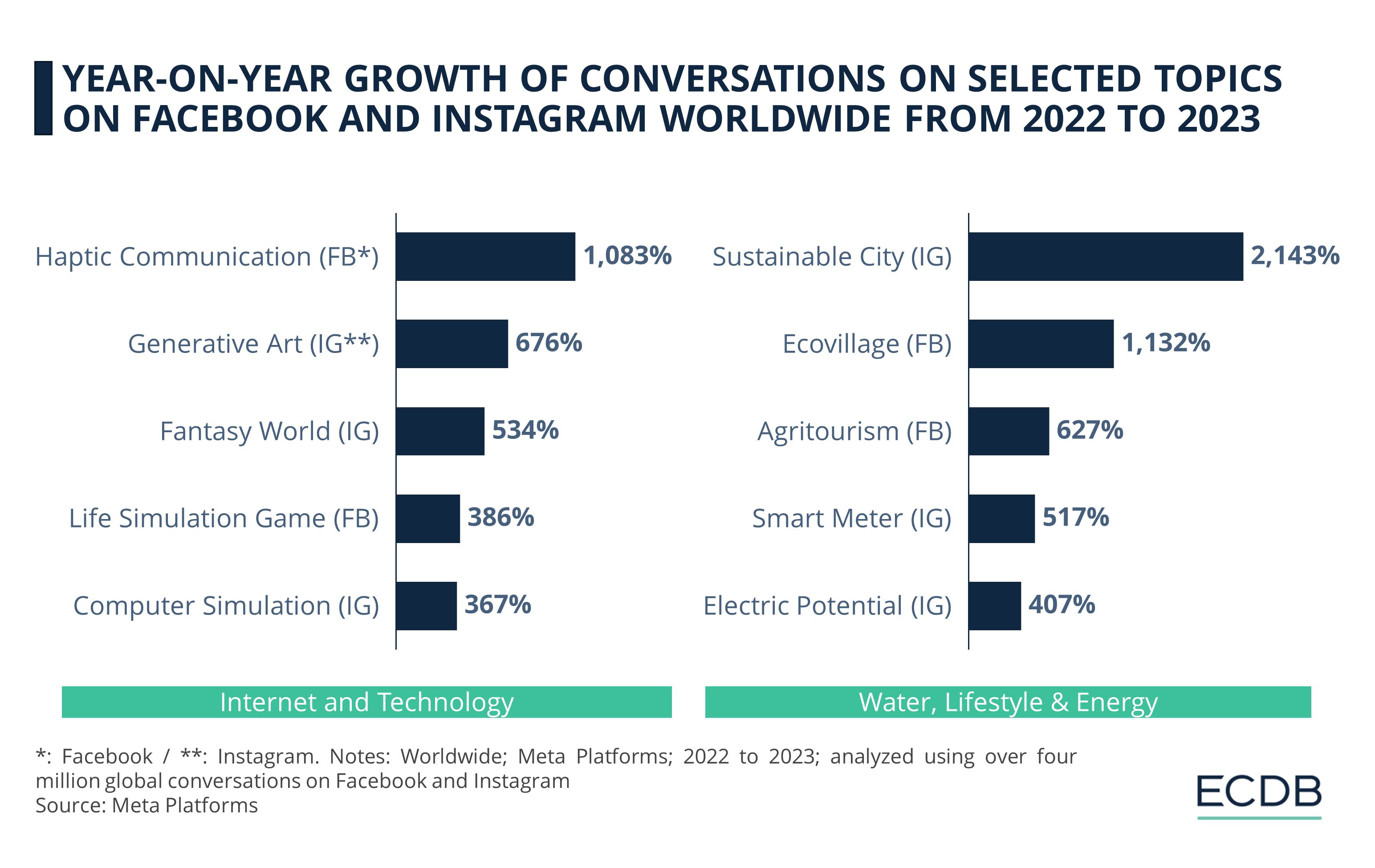
Meanwhile, the escalating discourse around sustainability, especially related to cities, ecovillages, and agritourism, suggests an increasing consumer demand for eco-friendly solutions and lifestyles. Businesses in the green technology or sustainable tourism sectors could thus find a ripe market ready for engagement.
By tuning into these trending conversations, businesses have the opportunity to better align their online content and marketing strategies with what's top-of-mind for social media users, thereby fostering stronger connections and driving social commerce.
Marketing Channels Matter: A Focus on Engaging Content
When discussing the types of content that engage online shoppers on social media, it's prudent to examine popular marketing channels.
According to 2022 data from Semrush, the top three channels used for marketing content promotion worldwide are social media (organic) at 73%, followed by email marketing at 53%, and social media (paid ads) at 51%. The prominence of social media channels, both organic and paid, underscores their vital role in today's content marketing landscape.
Reinforcing this focus, the top three technologies used to leverage content marketing efforts in 2022 were social media posting tools (58%), website analytics tools (49%), and email marketing software (48%). These technologies often directly or indirectly affect the performance and reach of content, particularly on social media platforms, making them crucial elements to consider when aiming to influence online shoppers.
Video is King
According to the same data from Semrush referred to earlier, video reigns supreme, with 45% of worldwide content marketing types in 2022 comprising this format. Short-form articles are next at 31%, followed by success stories at 28% and long-form blog posts at 24%.
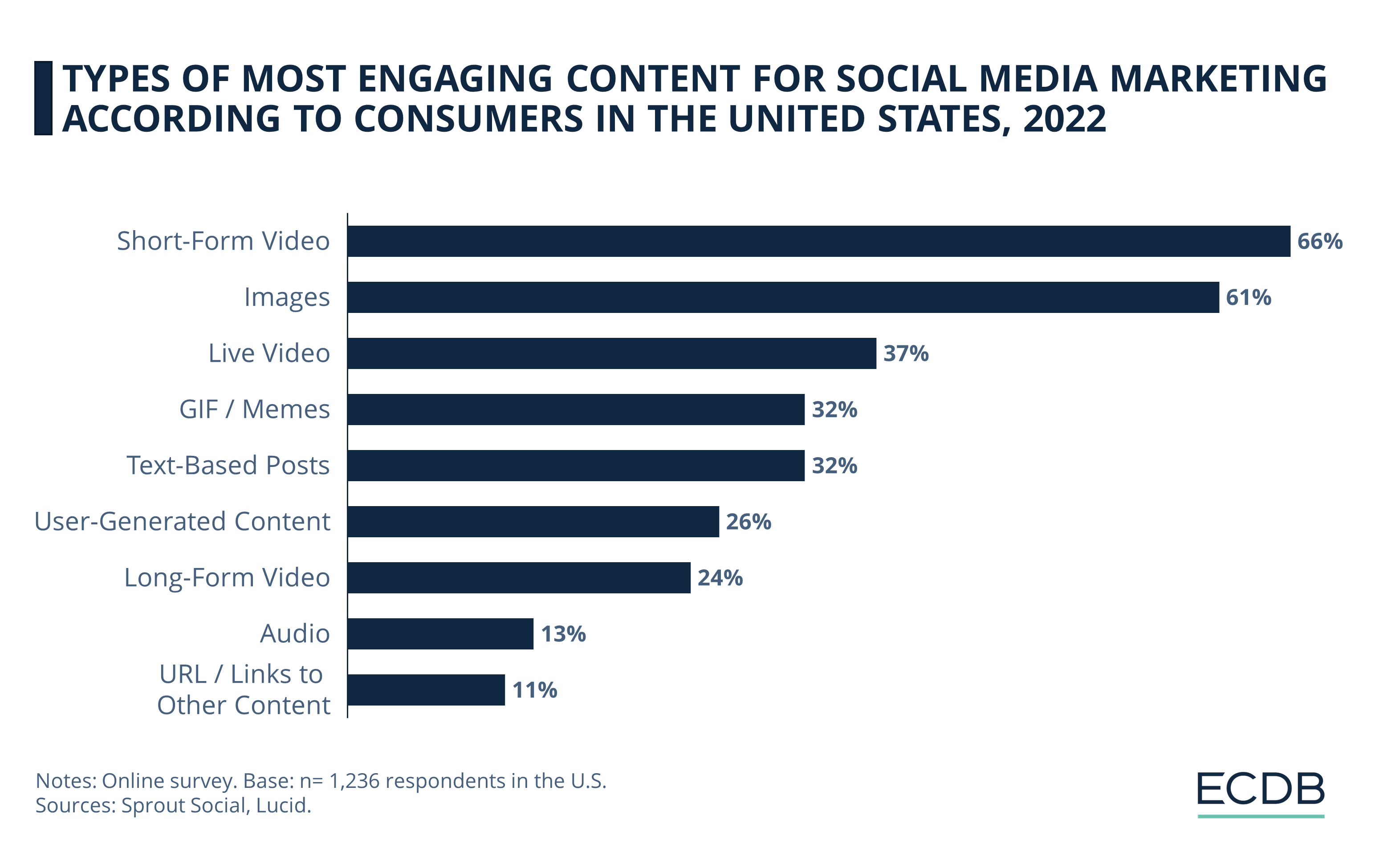
To round out this discussion, let's focus on what actually engages consumers. According to the results of a 2022 survey published by Social Sprout, in the U.S., the most engaging types of content for social media marketing are short-form videos (66%), images (61%), live videos (37%), GIFs/memes (32%), and text-based posts (32%). The dominance of short-form videos underscores the effectiveness of this format in holding the viewer's attention and potentially influencing online shopping behavior.
It's clear that picking the right channels, using smart tools, and choosing the best content can really help marketers grab the attention of online shoppers on social media. In particular, videos, both short and live ones, along with images, are very good at keeping people interested and may even get them to buy something online.
Selling Content on Social Media: Key Takeaways
Understanding social media's impact on eCommerce reveals that engaging consumers effectively involves more than surface-level interactions. Examining factors like motivation, content preferences, trends, and marketing channels provides valuable insights for businesses to enhance their online presence.
While social media is primarily used for personal connections, its role in influencing consumer choices such as product discovery and brand engagement is a growing sector that businesses in the eCommerce realm should not overlook.
Deals and discounts lead the charge in motivating consumers to shop on social media, followed by ease of purchase and exclusive offers, although a notable 15% remain unmoved by any incentives, according to a report by Wunderman Thompson Commerce.
Food content creators are most popular among social media users, but high follower counts do not automatically equate to influence over online shoppers, presenting an opportunity for marketers to craft nuanced strategies that engage audiences and boost social commerce.
Trending topics such as "Haptic communication" and "Sustainable city" indicate rapidly growing consumer interests in touch-based technology and eco-friendly solutions, offering businesses actionable insights to tailor their marketing strategies and capitalize on these evolving interests to drive social commerce.
Social media dominates as the top channel for content marketing, with video as the most produced and engaging format, presenting marketers with a strategic avenue for influencing consumer behavior and online shopping, according to 2022 data from Semrush and a survey by Social Sprout.
Sources: GWI, We Are Social, DataReportal, Meltwater, Wunderman Thompson Commerce, YouGov, Meta Platforms, Semrush, Sprout Social, Statista, ECDB
FAQ: Selling Content on Social Media
Let's clarify some key concepts. Understanding these terms is essential for grasping the broader discussions about online shopping behaviors and user demands on social media platforms.
What is Content on Social Media?
In the realm of social media, the term "content" refers to any material – be it text, images, videos, or even interactive elements—shared on platforms such as Facebook or Instagram. This material serves as the substance for online interaction, driving user engagement and facilitating connections among individuals or between businesses and consumers.
What is Social Content?
Social content could be considered a subset of social media content, specifically designed to foster engagement and social interaction. Unlike generic content that might solely inform or entertain, social content aims to spark conversations, elicit reactions, or encourage sharing. This could include polls, questions, and content that taps into current trends or sentiments.
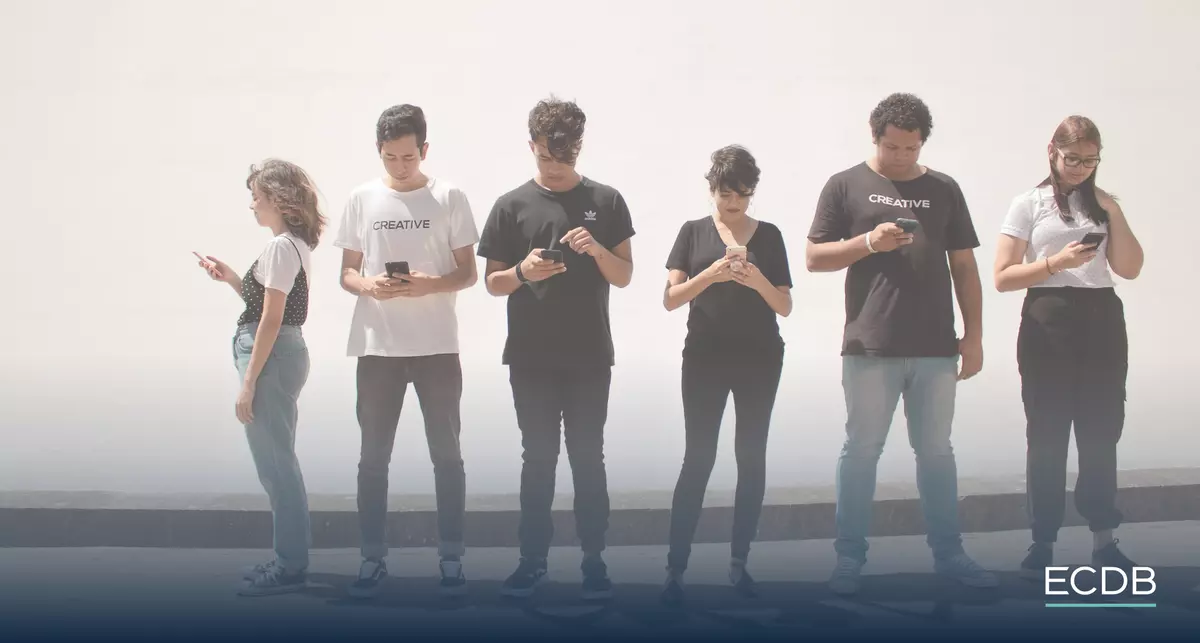
What is an Example of Content Media?
YouTube videos, for instance, serve as a prime example of content media. These videos can vary in their objective—from educational lectures to entertainment clips and while they may not inherently aim for social engagement, they are nonetheless a form of content that can be shared and discussed on social media platforms.
What is the Difference Between Content and Social Media?
Though closely linked, content and social media are not identical concepts. Content serves as the backbone—information, entertainment, or other material that can exist independently on various platforms, or even offline in the form of print media. Social media, on the other hand, is the digital infrastructure that enables the sharing and interaction around this content. In essence, content is what you share, and social media is where you share it.
Related insights
Article
Temu Continues to Grow in 2024: Outselling Shein, Wish & Alibaba
Temu Continues to Grow in 2024: Outselling Shein, Wish & Alibaba
Article
TikTok Ban in the United States: How Will This Impact Social Commerce?
TikTok Ban in the United States: How Will This Impact Social Commerce?
Article
Gen Alpha: The New Consumer
Gen Alpha: The New Consumer
Article
Live Commerce Trends in China: Market to Exceed US$1 Trillion by 2026
Live Commerce Trends in China: Market to Exceed US$1 Trillion by 2026
Article
Influencer Marketing in Social Commerce: Instagram and TikTok Influencers, Engagement Rate, Strategy
Influencer Marketing in Social Commerce: Instagram and TikTok Influencers, Engagement Rate, Strategy
Back to main topics